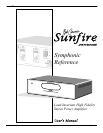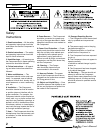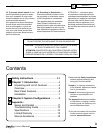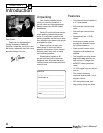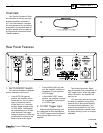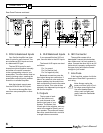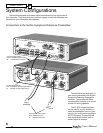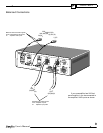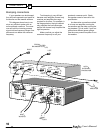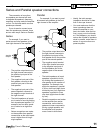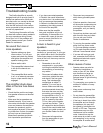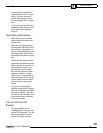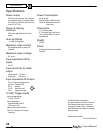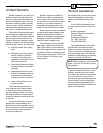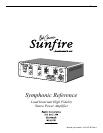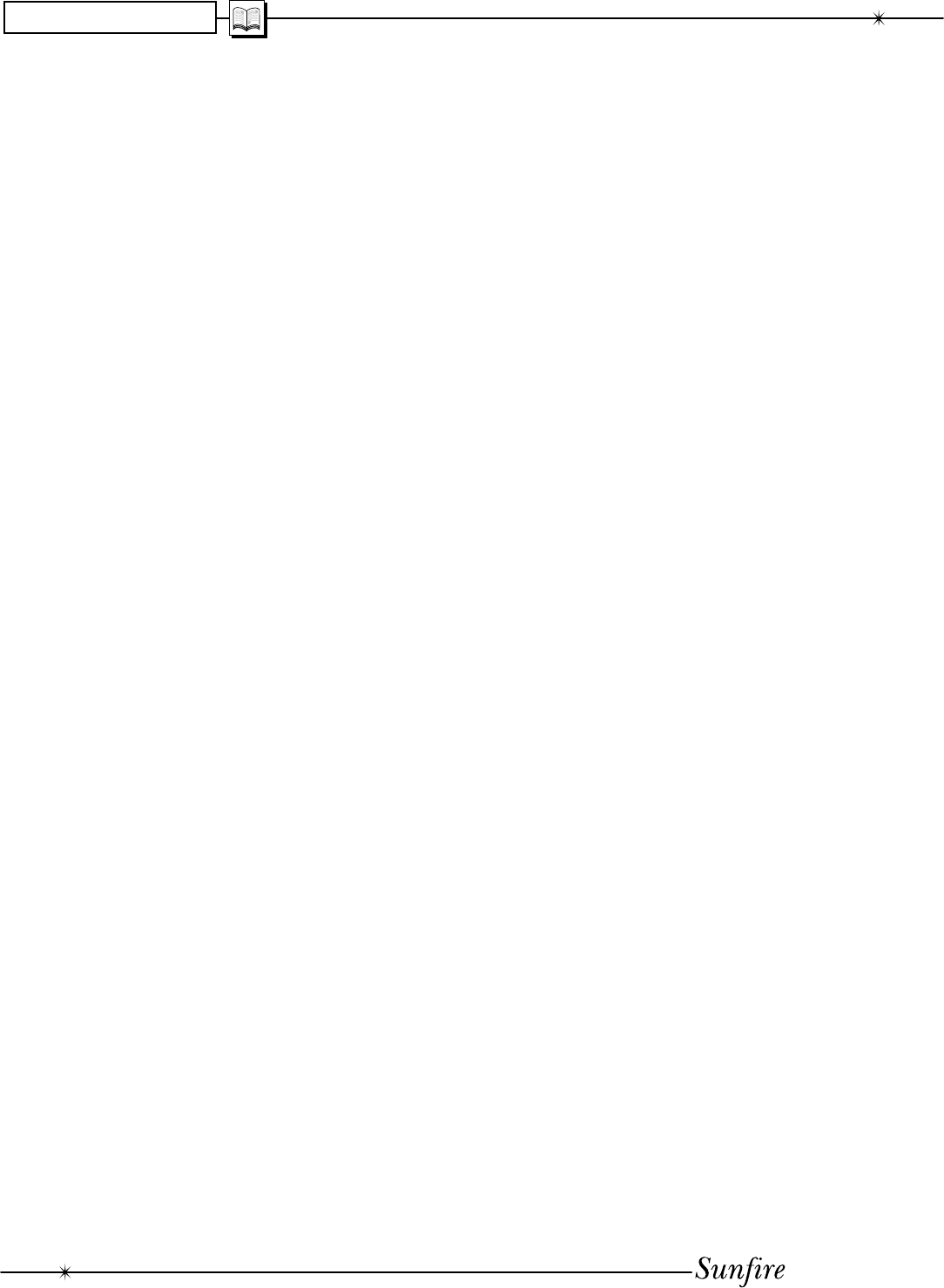
User's Manual
12
APPENDIX
The SunÞ re AmpliÞ er is expertly
designed and built to provide years of
trouble-free per for mance. Most prob-
lems that occur can usually be solved
by checking your setup or making
sure that the audio and video compo-
nents connected to the pro ces sor are
on and fully op er a tion al.
The following information will help
you deal with com mon setup problems
you may experience during normal
use of your unit. If the problems still
persist, please contact your SunÞ re
Dealer for assistance.
No sound from one or
more speakers
• Speaker cables may have
come undone. Turn off your
system and check the cables,
and tighten the ampliÞ er and
speaker binding posts.
• Broken audio cable.
• The preampliÞ er balance level
is low for the chan nel con-
cerned.
• The preampliÞ er Mute switch
is on, or an external processor
loop or a tape monitor loop is
engaged.
The ampliÞ er shuts down
often or the line fuse blows
often
• Check that the positive and nega-
tive speaker wires are not shorted
together.
• Make sure that no speakers are
shorted internally. If you have an
ohm-meter, disconnect the speaker
wires and mea sure the re sis tance
be tween the speaker’s positive
and negative terminals. If the read-
ing is less than 2 ohms, the speak-
ers may have an internal short.
Measure all speak ers and check
their impedance spec i Þ ca tions.
• If you have connected speakers
in Par al lel, the overall impedance
may be too low. It is recommended
that you rearrange the speakers
in Series to increase the overall
im ped ance, thus taking some of
the load off the ampliÞ er.
• Make sure that the ampliÞ er
has good ventilation and is not
overheating. If the ampliÞ er is in
a closed rack, open up the rear
panel or use a quiet fan for im-
proved ventilation.
A Hum is heard in your
speak ers
This problem is more than likely
caused by a “ground loop” in your sys-
tem, rather than a fault in the ampliÞ er.
Follow these steps to isolate the main
cause of the hum, there may even be
more than one.
• Remember to turn off all
components in your system,
including the ampliÞ er, before
disconnecting or con nect ing
any cables.
• Disconnect all cables which
come from outside the room,
and check if the hum goes
away. This includes such
connections as cable TV,
satellite TV, or roof top an-
tennas. Make sure that they
are dis con nect ed where they
Þ rst enter the room, so they
are making no con nec tion to
the preampliÞ er or the TV, or
any other component. If the
hum is caused by the cable
TV line, then you will need a
“ground loop iso la tor.” This is
an inexpensive device Þ tted in
line with the coaxial cable feed.
Con tact your ca ble com pa ny or
your Sun Þ re Dealer for as sis -
tance.
• Disconnect all connections
from the preampliÞ er to your
TV, VCR or DVD.
Troubleshooting Guide
• Disconnect any component
which has a grounded power
cord.
• If the hum persists, disconnect
all the source com po nents one
at a time from the back of the
preampliÞ er, until you identify
the prob lem.
• Ground loop isolators are avail-
able for audio lines and video.
You can ask your SunÞ re
Dealer for assistance.
• Try moving the speaker cables
away from any power cords.
Try just one speaker, connect-
ing it to each ampliÞ er channel
and see if one channel is bad.
• If you are still having a prob-
lem, remember that SunÞ re’s
dealers and technical support
staff will assist you.
Other causes of noise
• Speaker noise may also be
caused by in ter fer ence or
noise on your AC line. Make
sure there are no large ap-
pli anc es sharing the line, or
halogen lamps or light-dimming
Triac devices.
• Try connecting your system to
another AC socket on a sep-
a rate line.
• Keep power cords away from
audio cables.
• Do not place the preampliÞ er
directly on top of the ampliÞ er.
• If the hum is heard from within
the ampliÞ er and not through
the speak ers, this may also
be caused by in ter fer ence on
the AC or DC lines. The power
trans form ers may turn this
interference into an audible
noise. Internal hum can be
made worse by a shelf or cabi-
net resonating, so try moving
the ampliÞ er to another shelf.



